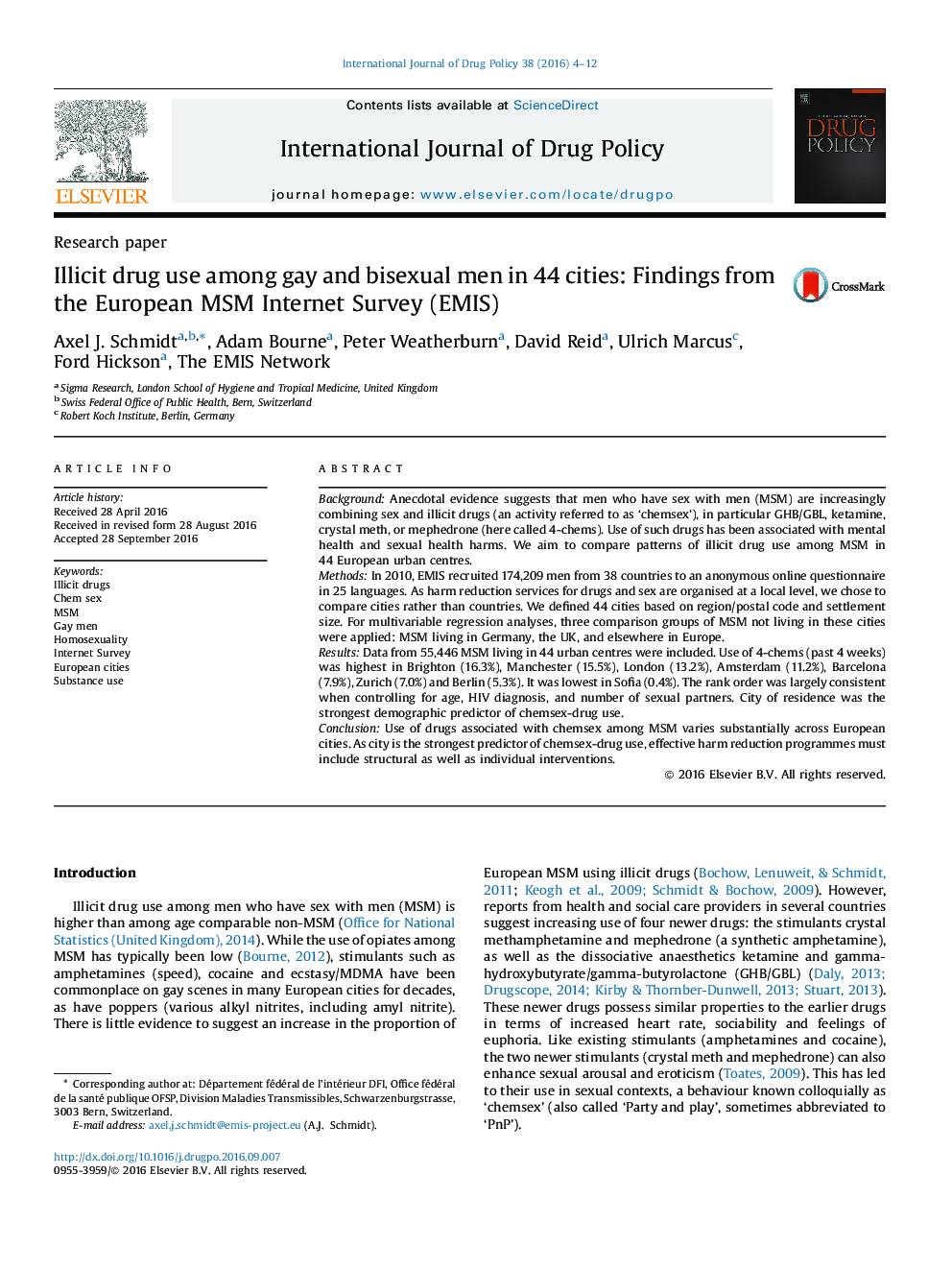| Article ID | Journal | Published Year | Pages | File Type |
|---|---|---|---|---|
| 5120904 | International Journal of Drug Policy | 2016 | 9 Pages |
BackgroundAnecdotal evidence suggests that men who have sex with men (MSM) are increasingly combining sex and illicit drugs (an activity referred to as 'chemsex'), in particular GHB/GBL, ketamine, crystal meth, or mephedrone (here called 4-chems). Use of such drugs has been associated with mental health and sexual health harms. We aim to compare patterns of illicit drug use among MSM in 44 European urban centres.MethodsIn 2010, EMIS recruited 174,209 men from 38 countries to an anonymous online questionnaire in 25 languages. As harm reduction services for drugs and sex are organised at a local level, we chose to compare cities rather than countries. We defined 44 cities based on region/postal code and settlement size. For multivariable regression analyses, three comparison groups of MSM not living in these cities were applied: MSM living in Germany, the UK, and elsewhere in Europe.ResultsData from 55,446 MSM living in 44 urban centres were included. Use of 4-chems (past 4 weeks) was highest in Brighton (16.3%), Manchester (15.5%), London (13.2%), Amsterdam (11.2%), Barcelona (7.9%), Zurich (7.0%) and Berlin (5.3%). It was lowest in Sofia (0.4%). The rank order was largely consistent when controlling for age, HIV diagnosis, and number of sexual partners. City of residence was the strongest demographic predictor of chemsex-drug use.ConclusionUse of drugs associated with chemsex among MSM varies substantially across European cities. As city is the strongest predictor of chemsex-drug use, effective harm reduction programmes must include structural as well as individual interventions.
